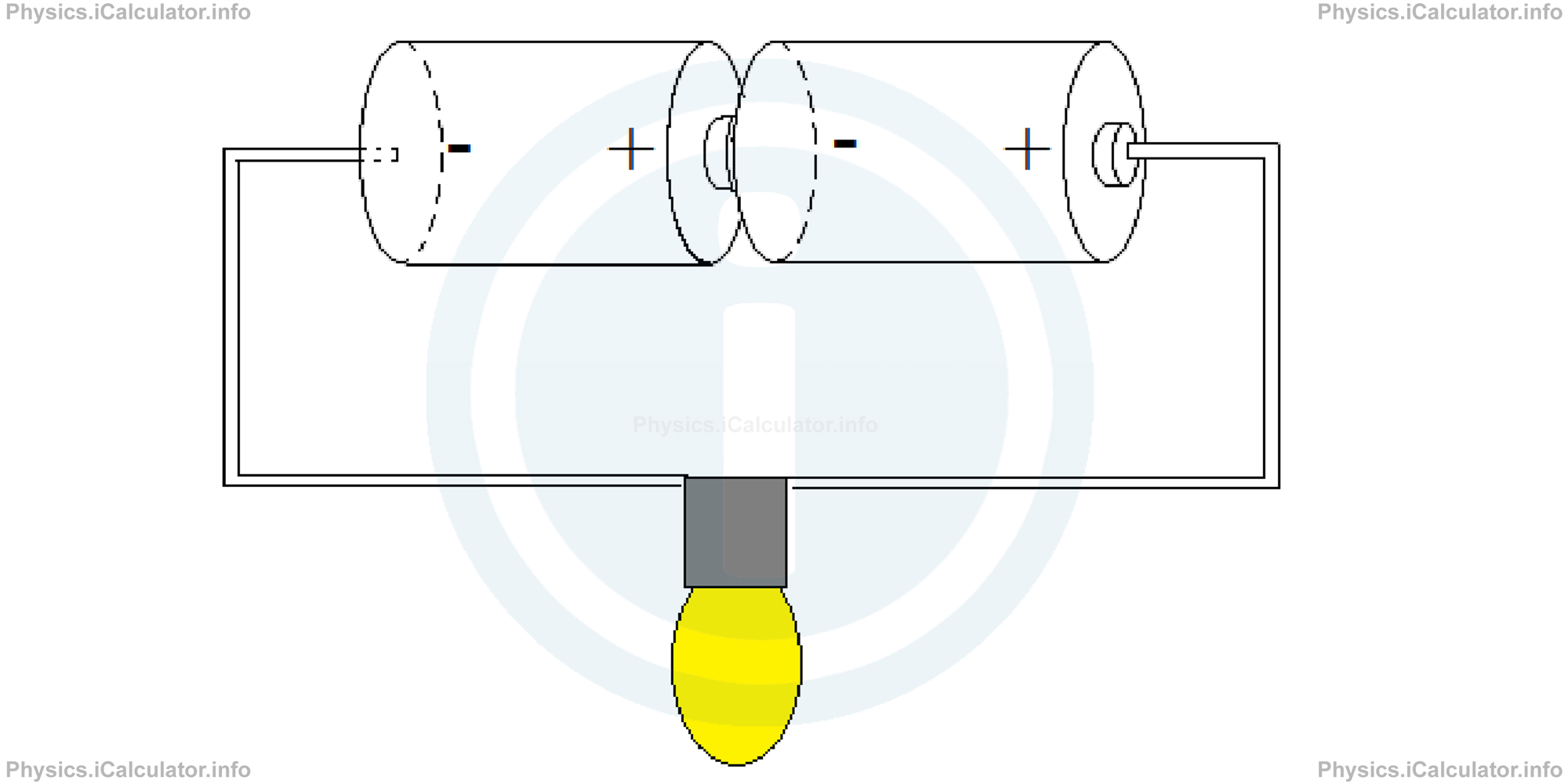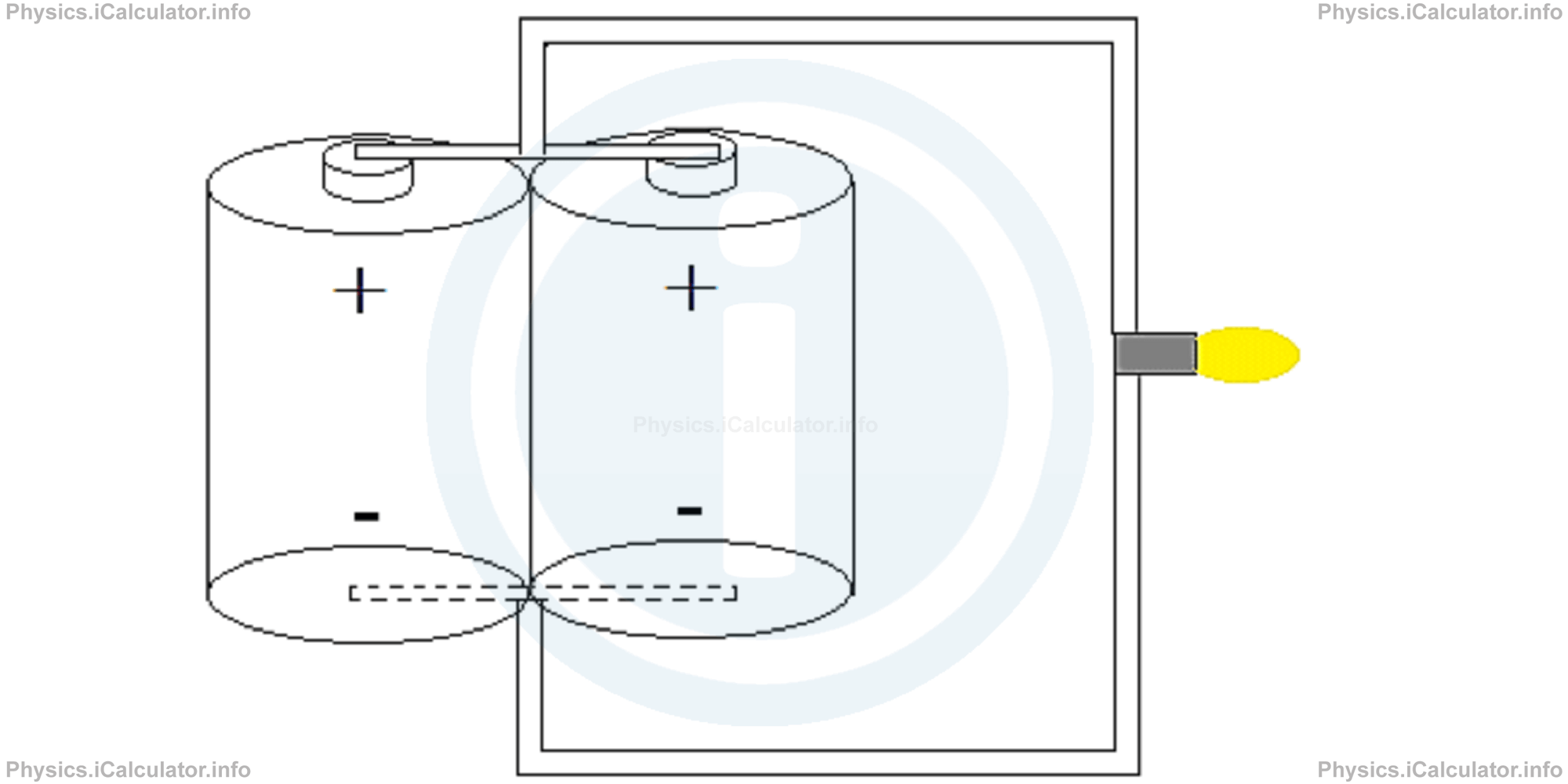Menu
Physics Lesson 15.4.3 - Combination of Cells
Please provide a rating, it takes seconds and helps us to keep this resource free for all to use
Welcome to our Physics lesson on Combination of Cells, this is the third lesson of our suite of physics lessons covering the topic of Electric Circuits. Series and Parallel Circuits. Short Circuits, you can find links to the other lessons within this tutorial and access additional physics learning resources below this lesson.
Combination of Cells
Cells - just like resistors - can be combined in series and in parallel. Such combinations are made for practical purposes or for necessity.
a. Series combination of cells
When the positive terminal of one cell is placed in contact with the negative terminal of another cell, we say they are connected in series, as shown in the figure below.

A series combination of cells offers the advantage of the increase in electromotive force as
Thus for two dry cells connected in series, we obtain
= 3 V
However, there is a drawback when connecting two cells is series: their life is not so long as they have to work at full capacity.
b. Parallel combination of cells
When two cells are placed side by side in a circuit, we say they are connected in parallel as shown in the figure below.

A parallel combination of cells has an advantage to the series combination: the batteries last longer as they help each other to do the required work. This results in a slower consumption of each battery.
However, a parallel setup of cells has a serious drawback: the potential difference is the same as if there was a single cell in the circuit. This means the electric source shown in the above figure produces an electromotive force of 1.5 V, as it is composed by two dry cells.
You have reached the end of Physics lesson 15.4.3 Combination of Cells. There are 5 lessons in this physics tutorial covering Electric Circuits. Series and Parallel Circuits. Short Circuits, you can access all the lessons from this tutorial below.
More Electric Circuits. Series and Parallel Circuits. Short Circuits Lessons and Learning Resources
Whats next?
Enjoy the "Combination of Cells" physics lesson? People who liked the "Electric Circuits. Series and Parallel Circuits. Short Circuits lesson found the following resources useful:
- Combination Feedback. Helps other - Leave a rating for this combination (see below)
- Electrodynamics Physics tutorial: Electric Circuits. Series and Parallel Circuits. Short Circuits. Read the Electric Circuits. Series and Parallel Circuits. Short Circuits physics tutorial and build your physics knowledge of Electrodynamics
- Electrodynamics Revision Notes: Electric Circuits. Series and Parallel Circuits. Short Circuits. Print the notes so you can revise the key points covered in the physics tutorial for Electric Circuits. Series and Parallel Circuits. Short Circuits
- Electrodynamics Practice Questions: Electric Circuits. Series and Parallel Circuits. Short Circuits. Test and improve your knowledge of Electric Circuits. Series and Parallel Circuits. Short Circuits with example questins and answers
- Check your calculations for Electrodynamics questions with our excellent Electrodynamics calculators which contain full equations and calculations clearly displayed line by line. See the Electrodynamics Calculators by iCalculator™ below.
- Continuing learning electrodynamics - read our next physics tutorial: Kirchhoff Laws
Help others Learning Physics just like you
Please provide a rating, it takes seconds and helps us to keep this resource free for all to use
We hope you found this Physics lesson "Electric Circuits. Series and Parallel Circuits. Short Circuits" useful. If you did it would be great if you could spare the time to rate this physics lesson (simply click on the number of stars that match your assessment of this physics learning aide) and/or share on social media, this helps us identify popular tutorials and calculators and expand our free learning resources to support our users around the world have free access to expand their knowledge of physics and other disciplines.
Electrodynamics Calculators by iCalculator™
- Amount Of Substance Obtained Through Electrolysis Calculator
- Charge Density Calculator
- Electric Charge Stored In A Rc Circuit Calculator
- Electric Field In Terms Of Gauss Law Calculator
- Electric Power And Efficiency Calculator
- Electron Drift Velocity Calculator
- Equivalent Resistance Calculator
- Force Produced By An Electric Source Calculator
- Joules Law Calculator
- Ohms Law Calculator
- Potential Difference In Rc Circuit Calculator
- Resistance Due To Temperature Calculator
- Resistance Of A Conducting Wire Calculator